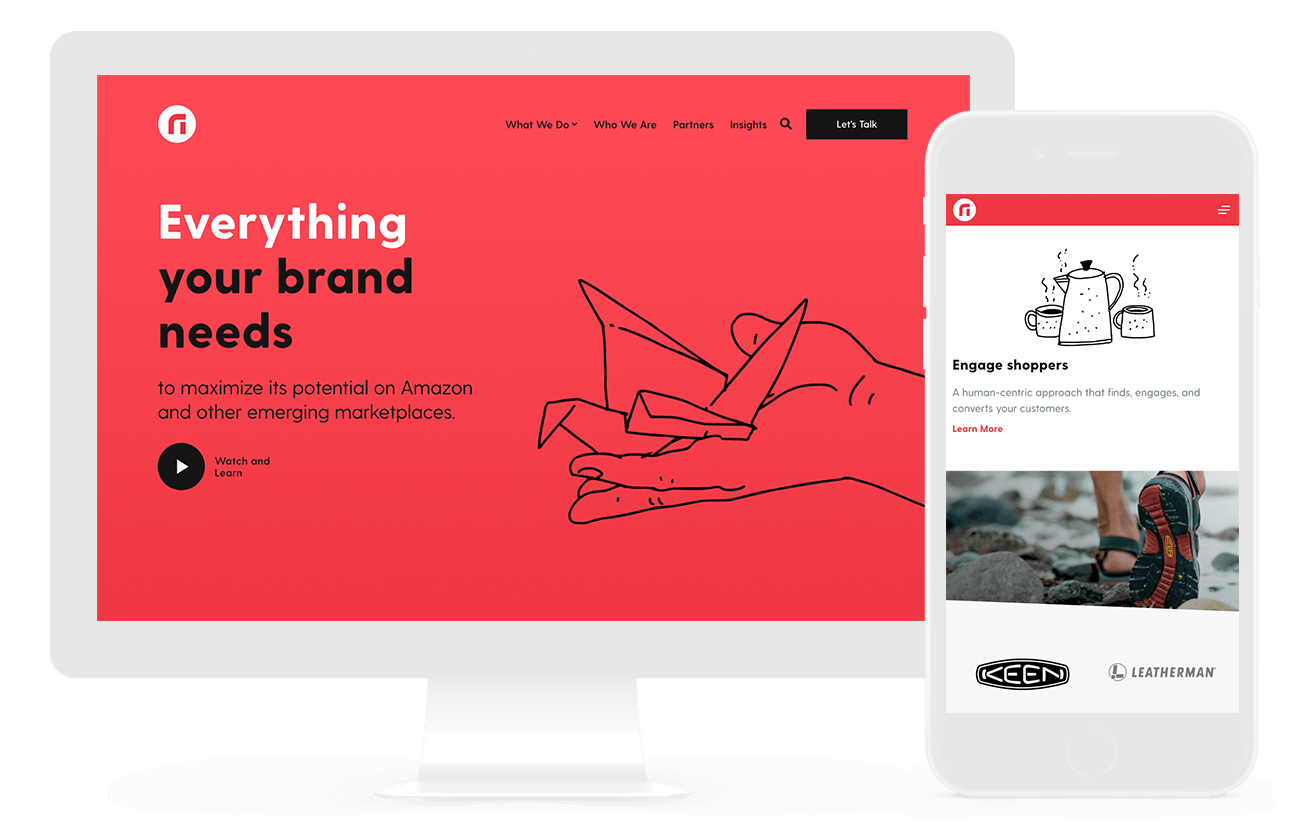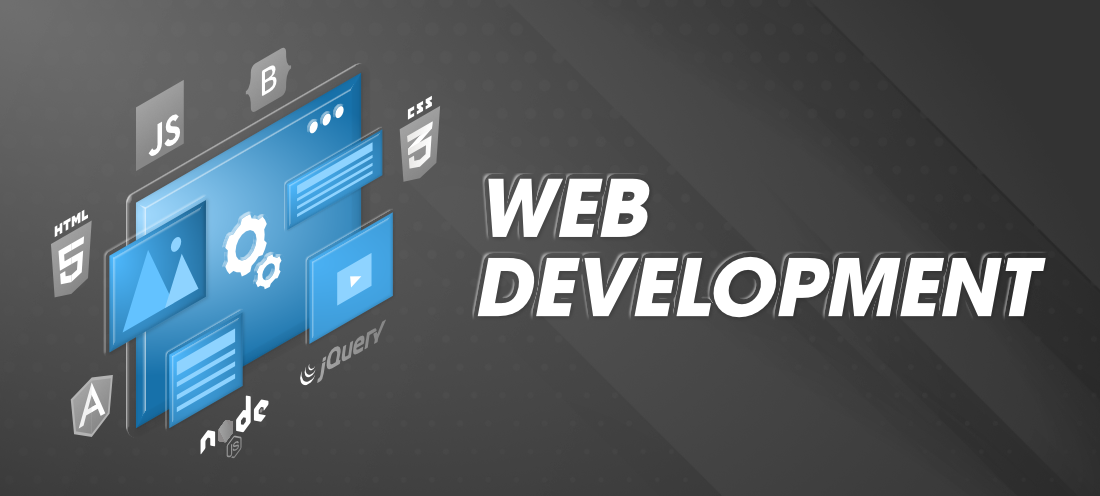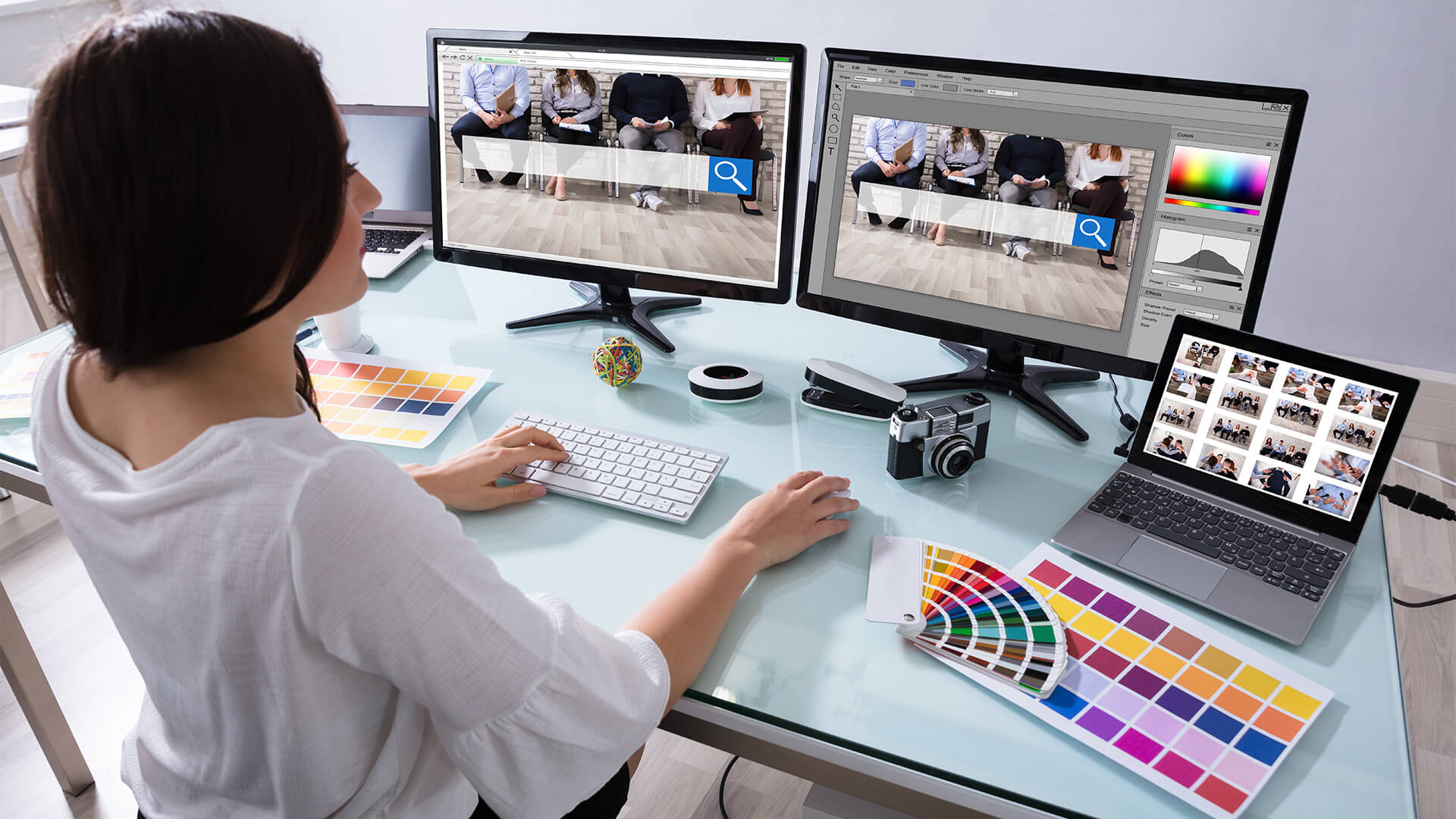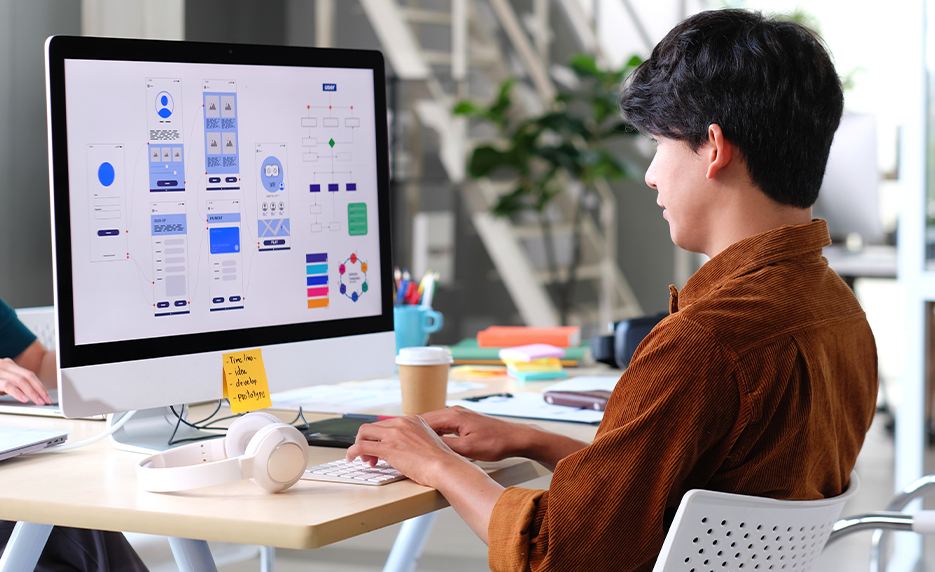All Categories
Featured
Table of Contents
- – Arch Web Design: Top-rated Web Design Agency F...
- – Trajectory: Atlanta Web Design Company Tips a...
- – Web Design Blog - Webdesigner Depot Webdesign...
- – Webpage Design (Article) - Further Learning -...
- – Web Design Studio & Digital Marketing Agency ...
- – Web Design Museum 1991 – 2006 Tips and Tricks:
- – Ciw Web Design Series Tips and Tricks:
- – What Can I Do With A Web Design And Developm...
- – 34 Of The Best Website Designs To Inspire Yo...
- – Web Design Company In Orlando, Florida And B...
- – Top Web Design Agencies Ranked - 2022 Review...
Arch Web Design: Top-rated Web Design Agency For Saas ... Tips and Tricks:
Quick summary Functionality and the energy, not the visual design, determine the success or failure of a website. Since the visitor of the page is the only person who clicks the mouse and therefore decides everything, user-centric design has established as a basic technique for successful and profit-oriented website design - web design frederick md.
and the energy, not the visual style, figure out the success or failure of a site. Because the visitor of the page is the only individual who clicks the mouse and therefore decides everything, user-centric design has become a basic method for successful and profit-oriented web design. After all, if users can't utilize a feature, it may as well not exist.
g. where the search box should be placed) as it has actually currently been carried out in a number of short articles; rather we concentrate on the approaches which, utilized appropriately, can lead to more sophisticated design decisions and simplify the procedure of perceiving presented information. Please observe that you may be interested in the usability-related articles we have actually released before: Concepts Of Great Site Style And Efficient Website Design Standards, In order to utilize the concepts appropriately we initially need to understand how users engage with sites, how they believe and what are the fundamental patterns of users' habits.
Trajectory: Atlanta Web Design Company Tips and Tricks:
Visitors glance at each new page, scan a few of the text, and click the very first link that captures their interest or vaguely looks like the thing they're looking for. There are big parts of the page they don't even look at. Many users look for something interesting (or beneficial) and clickable; as soon as some appealing candidates are found, users click.
If a page provides users with high-quality material, they are willing to jeopardize the material with advertisements and the style of the website. This is the reason why not-that-well-designed websites with premium material gain a great deal of traffic over years. Content is more vital than the style which supports it.

Really basic concept: If a website isn't able to satisfy users' expectations, then designer failed to get his task done correctly and the business loses cash. The higher is the cognitive load and the less user-friendly is the navigation, the more willing are users to leave the site and search for alternatives.
Web Design Blog - Webdesigner Depot Webdesigner Depot Tips and Tricks:
Neither do they scan webpage in a direct style, going sequentially from one site area to another one. Rather users satisfice; they select the very first sensible option. As quickly as they find a link that looks like it might result in the objective, there is a great possibility that it will be instantly clicked.
It does not matter to us if we understand how things work, as long as we can use them. If your audience is going to act like you're designing signboard, then design great billboards." Users wish to be able to manage their web browser and depend on the constant data discussion throughout the website.
If the navigation and website architecture aren't instinctive, the number of enigma grows and makes it harder for users to comprehend how the system works and how to get from point A to point B. A clear structure, moderate visual hints and easily identifiable links can help users to find their course to their goal.
Webpage Design (Article) - Further Learning - Khan Academy Tips and Tricks:

Since users tend to check out sites according to the "F"-pattern, these three declarations would be the very first aspects users will see on the page once it is loaded. The style itself is easy and user-friendly, to understand what the page is about the user requires to search for the answer.
Once you have actually attained this, you can interact why the system is beneficial and how users can benefit from it. Do Not Squander Users' Patience, In every task when you are going to offer your visitors some service or tool, try to keep your user requirements very little.
First-time visitors are ready to, not filling long web types for an account they may never ever utilize in the future. Let users check out the website and find your services without requiring them into sharing personal data. It's not reasonable to require users to go into an e-mail address to check the feature.
Web Design Studio & Digital Marketing Agency • Gravitate Tips and Tricks:
Stikkit is an ideal example for an easy to use service which requires almost nothing from the visitor which is inconspicuous and reassuring. Which's what you want your users to feel on your web website. Apparently, Mite needs more. Nevertheless the registration can be performed in less than 30 seconds as the form has horizontal orientation, the user doesn't even need to scroll the page.
A user registration alone is adequate of an impediment to user navigation to cut down on inbound traffic. Handle To Focus Users' Attention, As websites supply both static and vibrant material, some elements of the user interface bring in attention more than others do.
Focusing users' attention to particular areas of the website with a moderate use of visual aspects can assist your visitors to receive from point A to point B without thinking of how it really is supposed to be done. The less question marks visitors have, the they have and the more trust they can develop towards the business the site represents.
Web Design Museum 1991 – 2006 Tips and Tricks:
Strive For Feature Direct exposure, Modern web styles are usually slammed due to their method of directing users with aesthetically appealing 1-2-3-done-steps, big buttons with visual impacts etc. From the design perspective these aspects actually aren't a bad thing.
The site has 9 main navigation choices which are visible at the first glimpse. The option of colors might be too light, though. is an essential concept of successful interface style. It does not truly matter how this is accomplished. What matters is that the material is well-understood and visitors feel comfy with the method they connect with the system.
com gets straight to the point. No charming words, no exaggerated declarations. Rather a cost: just what visitors are looking for. An optimal solution for reliable writing is touse brief and concise expressions (come to the point as quickly as possible), usage scannable layout (classify the material, utilize multiple heading levels, use visual aspects and bulleted lists which break the flow of consistent text blocks), usage plain and unbiased language (a promo doesn't need to seem like advertisement; give your users some affordable and objective factor why they must utilize your service or remain on your site)6.
Ciw Web Design Series Tips and Tricks:
Users are rarely on a site to delight in the style; furthermore, in the majority of cases they are looking for the details despite the design - web design frederick md. Make every effort for simplicity instead of intricacy. From the visitors' viewpoint, the finest website style is a pure text, without any ads or more material obstructs matching exactly the question visitors utilized or the material they have actually been trying to find.
Finch plainly presents the information about the site and provides visitors an option of choices without overcrowding them with unneeded material. 7. Do not Be Scared Of The White Area, In fact it's really hard to overestimate the significance of white space. Not just does it assist to for the visitors, however it makes it possible to perceive the information presented on the screen.
Complex structures are harder to check out, scan, examine and work with. If you have the choice in between separating 2 style sections by a visible line or by some whitespace, it's normally better to use the whitespace solution. (Simon's Law): the better you manage to provide users with a sense of visual hierarchy, the easier your content will be to view.
What Can I Do With A Web Design And Development Degree? Tips and Tricks:
The exact same conventions and rules should be used to all elements.: do the most with the least amount of cues and visual elements. Four major indicate be thought about: simplicity, clearness, diversity, and focus. Simplicity consists of just the elements that are most essential for interaction. Clearness: all parts ought to be developed so their meaning is not unclear.
Conventions Are Our Good friends, Traditional style of site aspects doesn't result in a boring web site. As they lower the discovering curve, the requirement to figure out how things work. It would be a functionality problem if all websites had various visual presentation of RSS-feeds. That's not that different from our routine life where we tend to get used to fundamental concepts of how we organize data (folders) or do shopping (positioning of items).
comprehend what they're getting out of a site navigation, text structure, search positioning etc. A common example from use sessions is to translate the page in Japanese (assuming your web users don't understand Japanese, e. g. with Babelfish) and provide your use testers with a task to discover something in the page of different language.
34 Of The Best Website Designs To Inspire You In 2022 Tips and Tricks:
Steve Krug recommends that it's better to, but take benefits of conventions when you do not. 10. Test Early, Test Frequently, This so-called TETO-principle should be used to every website design job as functionality tests frequently supply into substantial issues and concerns related to an offered layout. Test not far too late, not too little and not for the wrong factors.
Some crucial indicate remember: according to Steve Krug, and testing one user early in the task is better than screening 50 near the end. Accoring to Boehm's very first law, errors are most regular during requirements and design activities and are the more pricey the later they are removed.
That means that you design something, test it, fix it and then check it once again. There may be issues which have not been found throughout the very first round as users were practically obstructed by other problems.
Web Design Company In Orlando, Florida And Bangor, Maine Tips and Tricks:

This holds for designers. After you've worked on a site for few weeks, you can't observe it from a fresh perspective any longer. You know how it is developed and therefore you know precisely how it works you have the wisdom independent testers and visitors of your website would not have.
It can be linked to other areas such as graphic style, user experience, and multimedia arts, but is more aptly seen from a technological standpoint. It has actually become a big part of people's everyday lives. It is hard to picture the Internet without animated graphics, various styles of typography, background, videos and music.

Throughout 1991 to 1993 the Internet was born. Text-only pages could be seen using an easy line-mode internet browser. In 1993 Marc Andreessen and Eric Bina, created the Mosaic browser. At the time there were multiple web browsers, nevertheless the bulk of them were Unix-based and naturally text heavy. There had been no integrated technique to graphic design elements such as images or noises.
Top Web Design Agencies Ranked - 2022 Reviews - Clutch.co Tips and Tricks:
The W3C was developed in October 1994 to "lead the Internet to its full capacity by establishing common procedures that promote its advancement and ensure its interoperability." This dissuaded any one company from monopolizing a propriety browser and programming language, which might have changed the result of the Web as a whole.
As this has happened the innovation of the web has actually likewise moved on. There have also been considerable changes in the way people use and access the web, and this has actually changed how websites are developed.
Learn more about Lovell Media Group LLC or TrainACETable of Contents
- – Arch Web Design: Top-rated Web Design Agency F...
- – Trajectory: Atlanta Web Design Company Tips a...
- – Web Design Blog - Webdesigner Depot Webdesign...
- – Webpage Design (Article) - Further Learning -...
- – Web Design Studio & Digital Marketing Agency ...
- – Web Design Museum 1991 – 2006 Tips and Tricks:
- – Ciw Web Design Series Tips and Tricks:
- – What Can I Do With A Web Design And Developm...
- – 34 Of The Best Website Designs To Inspire Yo...
- – Web Design Company In Orlando, Florida And B...
- – Top Web Design Agencies Ranked - 2022 Review...
Latest Posts
10 Principles Of Good Web Design - Smashing Magazine Tips and Tricks:
Siteinspire - Web Design Inspiration Tips and Tricks:
Web Design - Entrepreneur Tips and Tricks:
More
Latest Posts
10 Principles Of Good Web Design - Smashing Magazine Tips and Tricks:
Siteinspire - Web Design Inspiration Tips and Tricks:
Web Design - Entrepreneur Tips and Tricks: